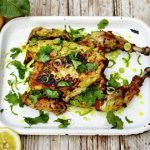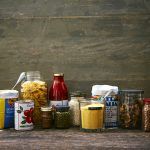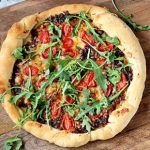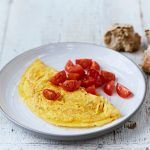Making your own pastry may seem like a slow and intensive process, but that’s the joy of it. Comfort food isn’t just about the way something feels or tastes when you eat it, it’s also about how you make it and what goes into it.
And what goes into pastry matters. A lot. I’ve been Jamie’s head pastry chef for years, and below are my top tips for perfect pastry, but a general note is to buy the best ingredients you can afford. Always try to use organic unsalted butter and avoid margarines – butter is king for flavour and colour – and only ever use unbleached good-quality flour. For the eggs and milk, try to use organic because the colour is superior and the flavour is second to none. Finally, fine sea salt is best for pastry making because the smaller grains incorporate into the dough better.
Once you have the right ingredients there are lots of ways you can take pastry depending on what you want to achieve. The ingredients may be similar but the results are all completely different, from big buttery shortcrust for meat pies, to delicate puff recipes for mille feuille. Whichever you’re after, here are the key things you need to know.
Sweet pastry
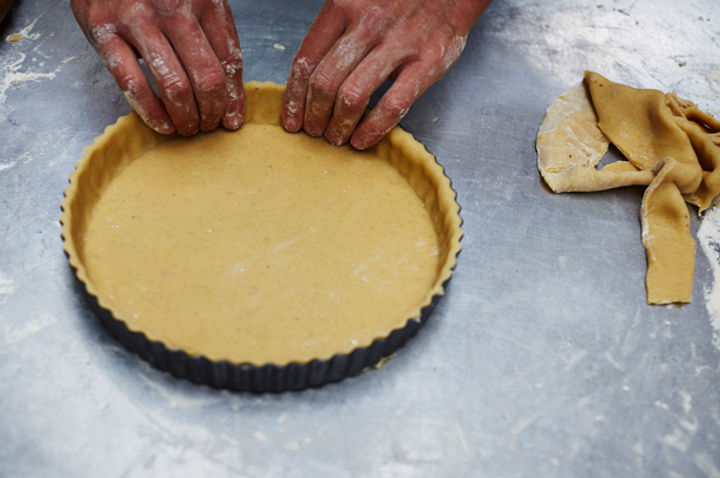
Homemade sweet pastry is so easy to master and much better than the shop-bought stuff. It’s used as the base for all kinds of sweet treats, from lemon and chocolate tarts all the way to frangipane.
Tips
- Resting is key! Never roll out freshly made pastry because it will shrink when it’s baked. Ideally refrigerate it overnight, or at least for a few hours. Once the tart tin is lined, place it in the freezer for another hour and blind bake from frozen.
- Don’t over-work it or else it may become thick and crumbly.
- Always roll the pastry away from yourself on a lightly floured surface, and always keep it moving.
- Always make three or four times the amount you need because it freezes well and can be saved for a rainy day.
- Sweet pastry is perfect for experimenting. Try adding different flavours such as cinnamon, lemon zest, vanilla, orange zest, poppy seeds to complement the tart’s filling.
Puff pastry
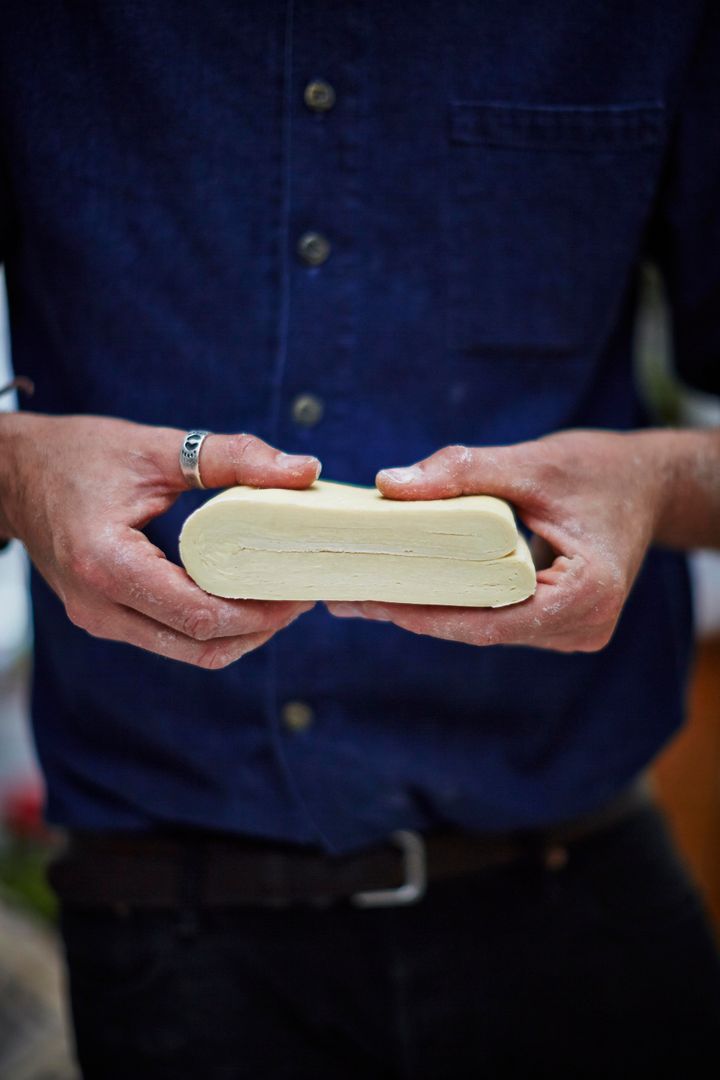
Puff pastry is the trickiest of all pastries to master, but is also the most rewarding because most supermarket puff pastry is made with substandard ingredients such as margarine. Many top restaurants don’t make their own, but all Jamie Oliver kitchens do. Nothing is quite the same as buttery puff pastry, lovingly made and fresh out of the oven! It’s responsible for some incredible treats, from mille feuille, tarte tatin and strudels to pie tops, cheese straws and puff pizzas.
This pastry is all about careful temperature control to ensure that the butter doesn’t merge into the dough while making the layers. When cooking, the moisture in the fat evaporates, causing lift and the creation of delicate layers. There are variations of puff pastry containing different amounts of butter – the ultimate version uses the same amount of butter and pastry, but it’s very hard to work with. For a beginner, using half as much better is more manageable.
Tips
- Work in a cool environment to stop the butter melting and merging with the pastry.
- The initial dough should be rough in look. Don’t overwork or it will become elastic and make rolling out very difficult.
- Rest the dough for 60 mins in the fridge before making the turns.
- Keep track of the number of turns you give the pastry by making a small indentation in the top of the dough.
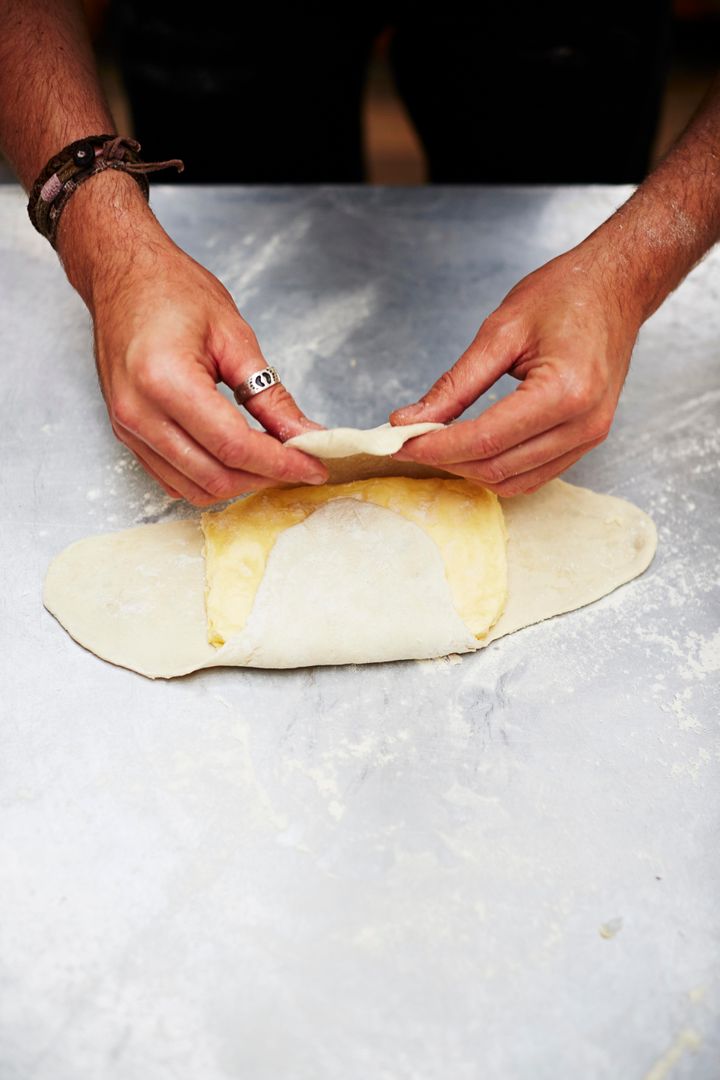
- Cook at a high temperature – at least 200°C/400°F for maximum lift.
- As it is such an undertaking, you should definitely make loads of it. It freezes very well and will save you having to do it again for a while!
Rough puff
Rough puff is pretty much a cheat’s puff pastry. It is the same recipe but you incorporate all the ingredients together – including the butter – to form rough dough. You then give the dough the turns as you would puff pastry. The result is a light flaky pastry with uneven layers. You get about 60% the lift you would do with real puff, but it’s easier and can be knocked up in much less time.
Pie crust
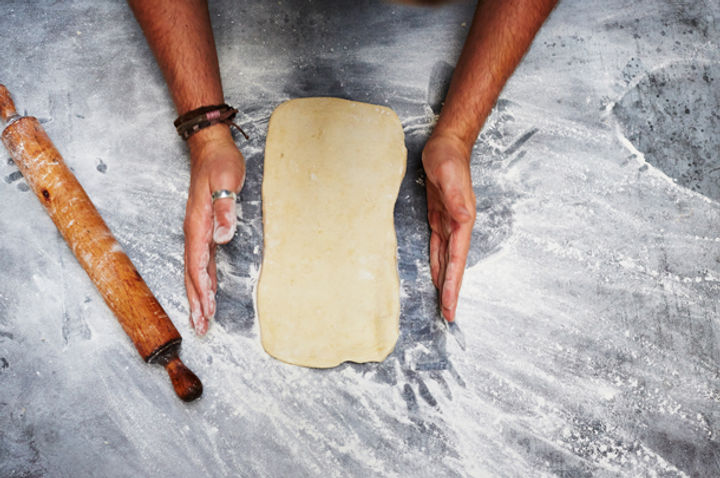
Rough puff makes a great pie case but everyone needs a winning piecrust recipe too. Piecrust is very simple to make and only takes about 20 minutes.
Tips
- My favourite combination is half butter and half lard. You can add some grated cheese to the pastry for extra indulgence too – just substitute some of the fat for cheese if doing this.
- Grating the frozen fat into the flour will reduce the amount of time you have to work the pastry and give you a flakier, crumblier crust.
- Only work to form a rough dough – having some chunks of butter still visible is a good thing!
Filo pastry
Filo pastry is a really tricky thing to make in a commercial kitchen, let alone at home. The quality of ready-made products is such that I don’t know anyone who makes this on a regular basis. You’re best off buying it ready-made – just check the ingredients list to make sure it’s free of any additives.
Strudel dough
Strudel dough is very similar to filo and rarely made, but I really enjoy the process and find it very easy to make. It is an unusual pastry to make and contrary to most other pastry requires lots and lots of working!
Tips
- The idea is to make an elastic dough so leave it to rest overnight to firm up.
- After resting for a long period of time, start by rolling it out gently with a rolling pin and then to stretch it out over the back of your hands until ultra thin.
Choux pastry
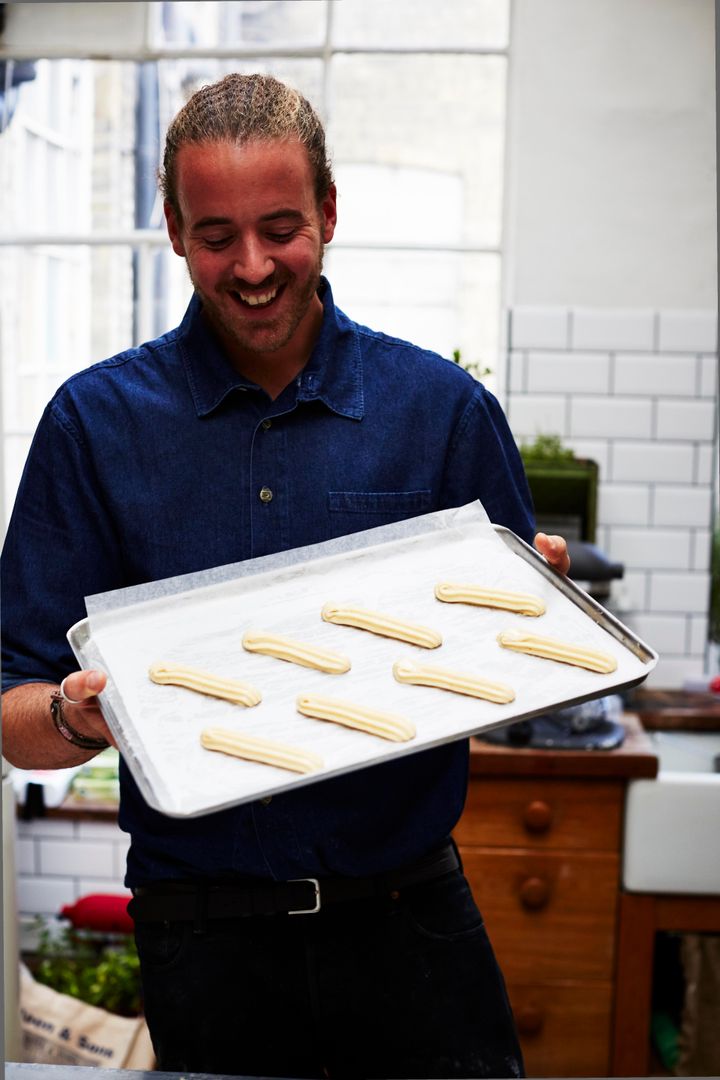
Choux is light, airy and crispy – think of profiteroles and éclairs, but it can also be fried and made into stunning doughnuts. It’s made in a very different way to other pastries and is cooked before you even use it. Choux is easy to master if you follow the simple rules and can be an impressive thing to have in your repertoire.
Tips
- Always cook out the flour fully – this is the most common mistake. It needs a good 3 mins on a medium-to-high heat while constantly working.
- Add your eggs slowly, one by one, and thoroughly mix.
- Always check the consistency of the choux once the egg has been added because it varies depending on the absorbency of the flour.
- Never open the oven door whilst cooking.
- Don’t under bake or you will end up with soggy choux!
- Use a star nozzle for piping because this will give you a more even bake.
- The choux can last for three days in a piping bag in the fridge once made, so don’t be afraid to over cater!
Being a pastry chef for the Jamie Oliver group, the sweet pastries are my favourite, so here’s my recipe for choux.
Choux pastry
125ml water
125ml milk
200g butter
5g fine salt
10g caster sugar
300g plain flour
325g eggs
- Combine the water, milk, butter, salt and sugar together in a saucepan, then place over a moderate heat and bring to the boil. Meanwhile, sift the flour.
- As soon as the pan boils, remove it from the heat and add the flour. Beat hard with a wooden spoon to incorporate the flour. Keep beating until the mixture becomes smooth and comes away from the sides of the pan cleanly – it should take about 2 minutes.
- Transfer to the a mixer and beat hard for 1 minute to ensure it is well mixed, then leave to cool for 2 minutes.
- Break the eggs and beat lightly together in a bowl. With the mixer on a medium speed, gradually incorporate the eggs a bit at a time. Once it’s all in, scrape down the side of the mixer, then increase the speed for one last blast for a minute. The mixture should be dropping consistency, but it may need a bit more egg.
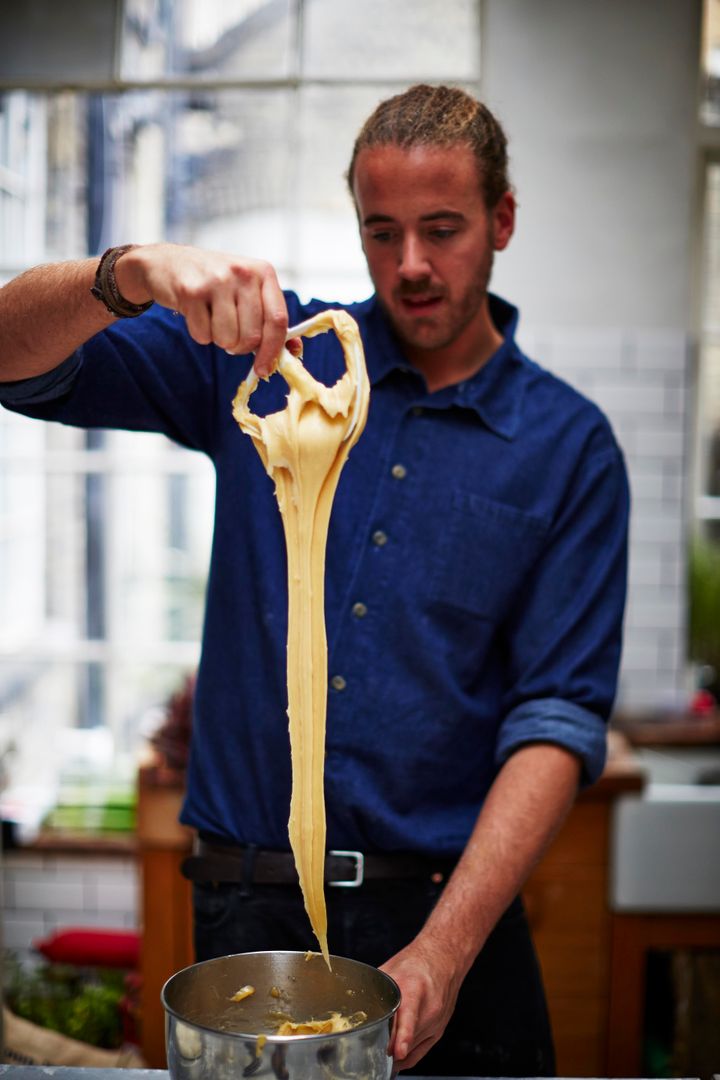
- Transfer to piping bags and store in the fridge for at least an hour before baking, or up to 3 days.
- To make profiteroles or éclairs – When it’s time to bake, pipe onto a lined flat baking tray lined with baking paper or a silicone matt. You’ll need walnut-sized drops for profiteroles or 3 inch cylinders for éclairs. Brush lightly with a fork dipped in water then bake in a preheated oven at 200°C/400°F 10 mins, then 180°C/350°F 10mins, then at 160°C/325°F for 10mins.


